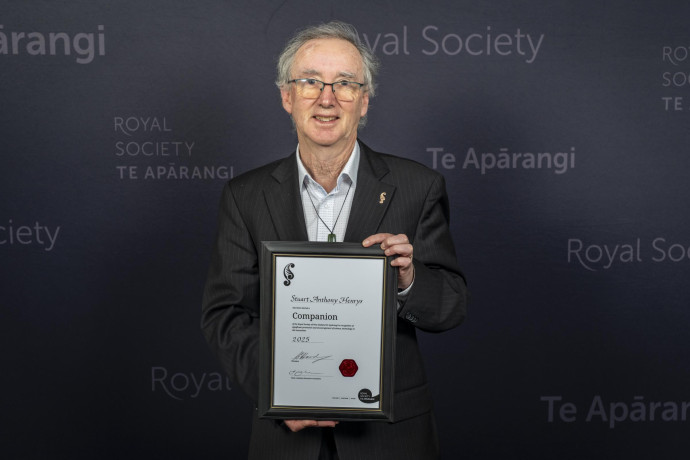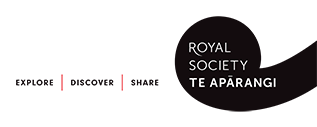News
Published 9 October 2025Stopping hazards from becoming disasters through geoscience

Dr Stuart Henrys CRSNZ has been elected as a Companion of the Royal Society Te Apārangi for his scientific leadership which has significantly advanced knowledge and understanding of earth science and tectonics in New Zealand.
His research has addressed critical issues facing New Zealand and the Pacific, including natural hazards, climate change, and stewardship of natural resources.
Through his leadership in establishing and chairing GeoDiscoveryNZ, Stuart has strengthened international collaboration in scientific drilling.
Over the past two decades, Stuart has been a leader or mentor in almost every geophysical investigation of the Hikurangi subduction zone – the nation's greatest earthquake and tsunami hazard.
The motivation to understand the forces that threaten us, and to help protect people from them, has been at the heart of my career. – Stuart Henrys
Reflecting on the beginnings of his career, Stuart says he feels deeply fortunate to have studied geology and physics at Waipapa Taumata Rau – the University of Auckland, an experience that introduced him to the “extraordinary power of geophysical measurements to illuminate the Earth’s hidden subsurface”.
“My doctoral research on the Ohaaki-Broadlands geothermal field marked a turning point in my career. Receiving a Fulbright Award enabled me to study at Rice University in the USA, where I built collaborations and friendships that became the foundation of a vibrant international research network.”
“These early connections, born from shared curiosity, proved to be catalysts for successful interdisciplinary projects, in the USA, Antarctica, and back home in New Zealand.”
Stuart says he became increasingly aware of the resource limitations faced by small nations like Aotearoa New Zealand when he was addressing profound questions about natural hazards, resource potential, and climate change.
“Yet I also came to see our position – astride the Australian/Pacific plate boundary and at the edge of the Southern Ocean and Antarctica – as a unique advantage.
“Channelling this awareness, I worked with colleagues to help found GeoDiscoveryNZ, fostering collaboration between CRIs and universities. Together, we built a cohesive Earth science community able to codesign proposals, cultivate leadership, and secure access to international instruments and research platforms, including major scientific drilling projects and expeditions.”
He says that through these global partnerships, they were able to gain access to world-class facilities that “unlocked research opportunities and impact that would have been impossible for New Zealand scientists working alone”.
Stuart says that for him, the driving purpose of science has always been to stop hazards from becoming disasters.
“Aotearoa New Zealand sits on a restless plate boundary, and there are still critical gaps in our ability to forecast earthquakes, tsunamis, and volcanic eruptions. I’ve become increasingly aware that we need to sharpen our ability to measure and monitor these hazards – especially offshore – so that warnings are timely and effective.”
He says this requires making major advances in observational capability, from satellite data to dense onshore and offshore networks, including borehole observatories and seafloor cables.
“The real challenge is then pulling all this information together – turning vast data streams into models that deepen our understanding of how earthquakes and volcanoes work.”
Stuart says, ultimately, he wants this knowledge to feed into next-generation hazard models that can make communities safer.
“The motivation to understand the forces that threaten us, and to help protect people from them, has been at the heart of my career.”
He says, in general, the role of science and innovation as a driver of economic growth is not sufficiently recognised.
“I believe harnessing science to deliver on government priorities requires stronger alignment between education, workforce capability, institutions, research infrastructure, and funding. This will ensure that knowledge translates into tangible outcomes for the nation.”
